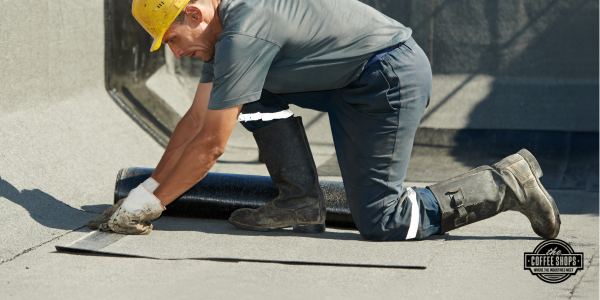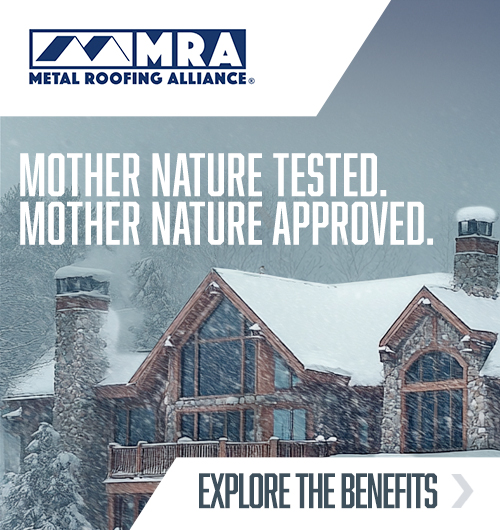Hurricanes are Coming! Have You Prepared Your Roof?

By IKO.
How to protect your home from hurricane season.
Unfortunately, there is no such thing as a hurricane-proof roof. Even a roof with cutting-edge technology cannot fully defend against a hurricane. As a homeowner, you will have to make sure your roof is properly prepared and maintained so it can protect you from the elements.
Research published by the Environmental Protection Agency (EPA) suggests that hurricane winds are getting stronger, and hurricanes will begin to affect more people. While any given year might have more hurricanes than average or fewer, the overall trend is for hurricanes to cause more damage. That means it is more important than ever to do everything in your power to protect your home and ensure a hurricane-proof roof. Below are some practical steps you can take to ensure your roof can withstand the storm.
How hurricanes impact roofing
While some roofs survive major hurricanes intact, other roofs suffer severe damage. Some roof trusses even blow off the home entirely. Much of the difference in roof performance during a hurricane has to do with the construction of the building. The major factors that determine whether or not your roof will blow off your home in a hurricane include:
- Where the home is situated.
- The strength of the structural connections in the building.
- The shape of the roof.
- Other architectural choices.
Hip roofs survive hurricanes better than gable roofs. The flat face of the gable catches wind, while the angle of a hip roof can better withstand the same pressure. In addition, low-slope roofs inherently experience higher wind loads and therefore perform worse in hurricanes than steep-slope roofs, according to research conducted by civil engineers at the New Jersey Institute of Technology. Specifically, this research found that roofs at a 7:12 pitch perform the best in high wind conditions.
Roofs that are structurally sound and well-attached to the rest of the building may still suffer in hurricanes. The extreme wind forces often blow water at a structure horizontally; instead of moving down from the sky, the water is directed across, hitting the roof from the side. This phenomenon is called wind-driven rain, and when it occurs during hurricanes, it can involve large amounts of water directed at your home for hours. It is a tough challenge to design materials and roofing systems that can resist this force. Any small gap in flashing, missing shingles or holes in the roof may let water into the home. Any piece of roofing material that catches the wind may be ripped off, creating a chain reaction that can strip the roof of shingles or underlayment. Then, the exposed decking can soak, which can create major leaks.
According to the Federal Emergency Management Agency (FEMA), there are multiple layers of risk reduction you can take to protect your home. Following building codes is the first step. Following construction best practices is the second. Obtaining homeowners insurance policies and purchasing additional insurance to cover hurricanes and flooding when your homeowner’s insurance does not cover these perils, is third. With these three elements of risk reduction, you should have excellent protection during a hurricane. However, FEMA recognizes that there will always be residual risk during extreme events.
What can you do to protect your roof in a hurricane?
Protecting your roof in a hurricane is all about preparation. Unless you intend to do a major rebuild of your home, you can’t control the design of your home or your roof. Instead, factors for roof performance that are within your control are about ensuring the roof you have will do the best job it can under the circumstances.
1 - Ask for a preseason roof inspection
Professional roofers are your roof’s first line of defense from hurricanes. Before hurricane season begins (this varies by year, but it is roughly May 15 for the Pacific and June 1 for the Atlantic), you should have a roofer inspect your roof. They may spot potential problems, from bent flashing to missing shingles, which could make your roof more vulnerable to extreme winds. One of the most common issues is damage to the edge of the roof, including the fascia and soffit boards. Roofers should pay special attention to this area of the roof and ensure all is secure before hurricane season.
Routine maintenance, such as cleaning gutters, downspouts and valleys, as well as trimming nearby tree limbs, can also help protect your roof from damage during storms.
While you have your trusted roofer inspecting your roof, ensure that you have their updated contact information available in case of an emergency roof issue after the storm.
2 - Choose performance products
Not all roofing materials and features are made equal. Choose roofing products that offer limited wind warranties up to 130 mph (210 km/h). No shingle is impervious, but IKO has specifically designed performance shingles to better handle various environmental challenges, including high winds.
Some shingle manufacturers, including IKO, suggest different installation practices for high-wind conditions. We strongly suggest you consider a high-wind application if you live in a high-wind area.
Underlayment choice can also impact roof performance. Ensure that your roof has at least the bare minimum amount of ice and water protector. Choose synthetic underlayments that offer better moisture protection than felt. Even if some shingles are blown off, the right underlayment can help reduce the amount of water that gets into your home.
3 - Follow building codes
Typically, you will only have to get your roof up to code with any changes to the building codes when you get a roof replacement, or a repair of an area affected by the building code change. However, sometimes adopting the improvements laid out in the building codes before hurricane season can help offer you additional protection.
For example, as of January 1, 2021, the Florida Building Code has changed several roof requirements, including adding a secondary water barrier and additional fastening. Changes to rules for soffits were also implemented to reduce the impact of high winds on this key area of the roof. These new regulations do not negate other building code requirements for your roof.
Ask your roofer if it is in your best interest to update your roof to meet any new building code requirements before a hurricane.
4 - Add or inspect hurricane ties
Hurricane ties strengthen the connection between the roof truss and the home’s structural elements, preventing roof blow-off in high winds. Consider adding hurricane ties. If your home already has hurricane ties, your roofer should inspect them for corrosion and other damage during the preseason inspection.
5 - Consider the FORTIFIED™ program
The FORTIFIED ™ program is a voluntary program run by the Insurance Institute for Business & Home Safety (IBHS) with the goal of improving roof and home performance in hurricanes. By bringing your home up to the program’s standards, you can improve your roof’s performance in weather events.
The program has requirements for roofing and other parts of the home beyond what most building codes require. These enhancements can help a roof and home withstand even Category 3 hurricanes. The program’s requirements are based on research from the IBHS. Standards include sealing the roof deck, using a thicker drip edge, and ensuring that starter shingles are fully adhered to the roof deck. As research has demonstrated, the most critical factor in shingle performance is the strength of the seal between the shingles. These measures are intended to bolster this connection. You can ask a professional roofer to ensure your roof meets FORTIFIED™ standards.
6 - Address roof repairs
Before a storm, it is smart to get your roofer to complete any roof repairs that you have been putting off. Even small issues with the roof can lead to more serious damage during a hurricane.
Roof vents are especially important to inspect and repair. They are crucial components of a roofing system, but they can become points of concern during hurricanes, particularly if they leak. Choose hurricane-rated roof vents and have a reputable roofer install them to prevent leaks and hurricane-related vulnerabilities.
7 - Protect skylights
Skylights are particularly vulnerable during hurricanes and any high-wind conditions. Manufacturers equip modern skylights with tempered glass or plastic, which means they do not leave dangerous shards behind if broken during a hurricane. Skylights are typically designed to resist wind, but they can still suffer damage in high winds and hurricanes.
Have your roofers replace your current skylights with hurricane-resistant skylights. They are not hurricane proof, but they do have much higher wind-resistance properties than some other options on the market.
If this is not an option, you may be able to cover your skylight with a metal cage, plywood or a specifically designed skylight shutter. If the installation is temporary, your roofers will need to repair any shingles surrounding the skylight that they had to puncture with nails to secure the skylight cover.
8 - Secure roof documentation
Take some “before” pictures of your roof for insurance and limited warranty claims. Take overall pictures from multiple angles and some close-ups as well. Your roofer can help by taking photos of points of interest, like chimneys and skylights, from on top of the roof. Save the photos to your cloud storage to ensure you don’t lose them if something happens to your phone.
It may also be useful to scan and save digital copies of any limited warranties your roof may be under, including those from your manufacturer and the roofers who installed the roof.
9 - Store potential projectiles
Many of the loose objects you have on your property may become projectiles in hurricane conditions. These can damage your roof, other parts of your home or your neighbor’s property. Before a hurricane, bring in lawn furniture, trampolines, children’s toys and anything else that you typically store unsecured outside.
10 - Verify your home insurance
In the United States, most homeowner’s insurance policies will not cover flooding and may not cover other hurricane damage. Before you choose a policy, or at least before a hurricane, confirm with your insurance provider that you also have hurricane and flood protection policies in addition to your homeowner’s insurance policy. You can purchase flood insurance through the National Flood Insurance Program (NFIP) in the United States. In Canada, you may find it offered by any insurance broker as an umbrella policy on top of homeowner’s insurance or separate to homeowner’s insurance. Also, ensure that your coverage is large enough to provide for the whole cost of your roof replacement in the event a hurricane destroys it. It may be worthwhile to buy an umbrella insurance policy to increase the dollar amount of coverage so that your policies will cover more of your roof replacement cost.
Protecting your home’s roof from hurricanes
When considering what steps you should take to protect your home from hurricanes, it is always wise to speak with your trusted roofer, who may have specific advice for your roof. In the unfortunate event a hurricane damages your roof, it can help you to know you have financing options for roof replacement and repair that can ensure you get the damage fixed quickly. Plan ahead and be prepared this hurricane season.
Have a question? AskARoofer.
Find your local roofing contractor in the RoofersCoffeeShop® Contractor Directory.
Original article source: IKO
Disclaimer: The information provided on AskARoofer.com or information sent by emails is the opinion of the writers. It is the responsibility of the reader to check for accuracy in one's own jurisdiction, as there are different codes and restrictions for different parts of the country. AskARoofer.com does not accept any liability for the use of information on this website or email. AskARoofer.com has no controls over product failures, installation, or climate conditions that may change the roofing process in your area. Our information is in general to our area and cannot be the same as your local town or state. It is advised to seek the local Building Department, Licensed Contractor, and local Product Representative for proper installation requirements and code enforcement when installing a new roof.










Comments
Leave a Reply
Have an account? Login to leave a comment!
Sign In